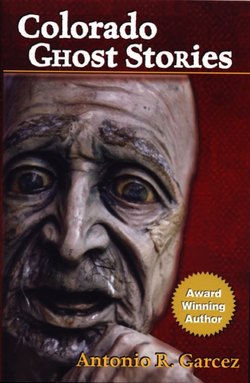Читать книгу Colorado Ghost Stories - Antonio Boone's Garcez - Страница 17
Holy Cross Abbey
ОглавлениеSince the printing of this book, the abbey has been sold.
The following text was reproduced here from the abbey’s visitor brochure:
“Welcome to Holy Cross Abbey. The Monks (Priests and Brothers) wish to welcome you to the Holy Cross Abbey. As this is our home, we have living areas for the monks that are cloistered (private) and not available for public viewing. These areas include the second floor and above and many rooms on the first floor, some of which are offices. The simple Latin word PAX (peace) is the Benedictine motto. The fundamental purpose of Benedictine monastic life is to seek God, ut in omnibus glorificetur Deus: “That in all things God may be glorified.” We are of the ORDER OF ST. BENEDICT (O.S.B.), also known as Benedictines. The areas that are open for viewing include our chapel, parlor, gift shop and museum. Please proceed down the hall to our Chapel that is to the left at the south end of the Monastery. You will find us in Chapel six times a day for either mass or prayer. The public is always welcome to join us at these times. In the chapel, please do not enter the altar area. Silence is observed within the monastery at all times.
In the Chapel you will notice the large wood crucifix that is suspended from the ceiling, it was carved in Oberam-mergau, Germany and given as a gift to the abbey in 1961. The carved stature near the corner depicts Jesus as the Sacred Heart. Another stature, Our Lady of Montserrat, is mounted on the balcony just over the main entrance to the chapel. On the columns of the chapel stand the statues of the 12 Apostles. The stained glass window was donated by the Simon P. Smith family. The Blessed Sacrament altar and the main altar are the work of monks of this abbey.
The South Parlor of the Abbey has genuine, Victorian furniture that came to the Abbey following the closing of the Stratmore Hotel in Cañon City. The parlor is also used for wake services upon the death of a monk here at the Abbey.
The first Benedictine Priests came from St. Vincent’s Archabbey in Latrobe, Pennsylvania, to Colorado in 1886, and settled in Breckenridge for two years. They moved to Boulder, then to Pueblo, and finally established themselves in Cañon City in 1924. In 1925, the community of monks became an abbey. The Abbey also developed a winery on the east end of the property.
Abbey — A monastery or convent governed by an Abbot or Abbess; also the community of monks or nuns numbering at least twelve in a canonically erected monastery or convent. Generally refers to the entire group of buildings, but sometimes only to the church building.
Monastery — The place of residence of a group of monks; the building wherein monks live and carry on their religious life.
Monk — A name given to a member of a community of men living apart from the world under the vows of poverty, chastity, and obedience and according to some rule of religious order. In particular, it became associated with those following the Benedictine Rule.
Priest — One upon whom the sacrament of Holy Orders has been conferred and who is thereby a minster of divine worship; one upon whom the power of offering sacrifice, of blessing, of giving absolution, and of preaching has been conferred. The power to consecrate, thus to offer the Sacrifice of the Mass; the priest- hood has the power to administer sacraments, forgive sins, and to bless.
Brothers — Members of a male religious community who have not taken priestly Holy Orders or who do not aspire to Holy Orders, but live a religious community life and devote themselves to various works of a religious nature.
At of the writing of this story, the Holy Cross Abbey is sadly being put up for sale. Due to the overwhelming costs of its up- keep and lack of new initiates to the Benedictine Order, the Abbey officials have finally made the painful decision to close it. As I met with and interviewed the Abbey’s last remaining priest, Fr. William Thompson, I was impressed with this gentle and spiritual man’s pleasant personality and candid manner. It was obvious to me that he was saddened to leave the abbey, but that he was nonetheless realistic in his out- look. The following is my short interview with Fr. Thompson.
